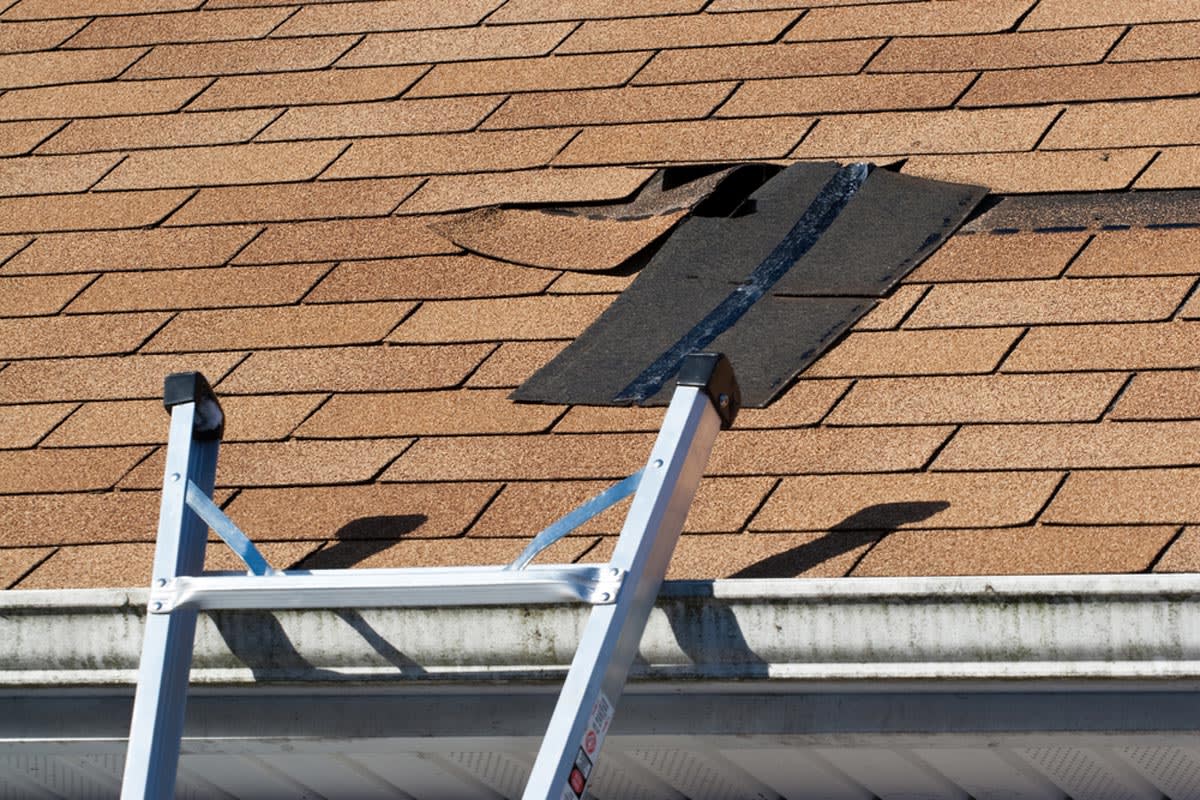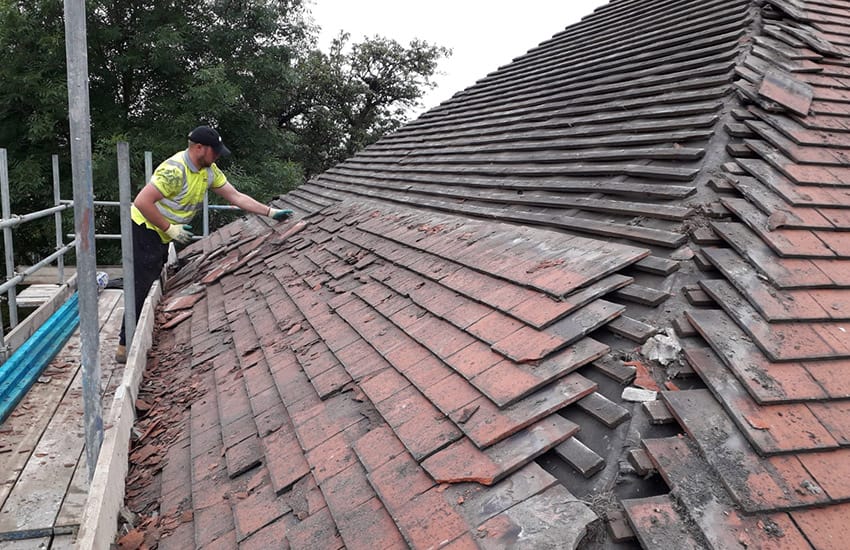Oahu Roofing: Reliable Roofing Solutions for Homes and Companies
Oahu Roofing: Reliable Roofing Solutions for Homes and Companies
Blog Article
Recognizing the Different Sorts Of Roofing Systems: A Comprehensive Overview for Homeowners
In the realm of homeownership, selecting the proper roof covering style is a decision that carries considerable ramifications for both performance and aesthetic allure. With a selection of options-- varying from the typical gable to the contemporary level-- each type presents distinct advantages and challenges that should straighten with the house owner's environmental considerations and certain needs. Understanding these differences not only help in making an educated option yet likewise influences long-lasting maintenance and power efficiency. As we check out the ins and outs of numerous roofing system kinds, it ends up being evident that dimension does not fit all; the right option may shock you.
Gable Roofing Systems
Gable roofings, identified by their triangular shape, are amongst the most prominent roof covering styles due to their simplicity and performance in shedding water and snow. This design includes 2 sloping sides that meet at a ridge, permitting reliable water drainage and reducing the threat of water build-up. The steep pitch generally related to gable roofs improves their ability to manage hefty precipitation, making them ideal for various climates.
In addition to their functional benefits, saddleback roofs use visual adaptability. They can be adjusted to numerous building designs, from typical to modern-day homes. The style can additionally suit additional functions such as dormer home windows, which enhance natural light and ventilation in the attic room space.
Moreover, saddleback roofs supply ample area for insulation, adding to energy performance. Property owners can choose from a selection of roofing materials, including asphalt shingles, metal, and tiles, even more improving personalization alternatives.
Regardless of their benefits, gable roof coverings might call for added support in areas susceptible to high winds or heavy snowfall. On the whole, the gable roof covering remains a popular option because of its blend of capability, sturdiness, and aesthetic appeal.
Flat Roofs
Level roof coverings are commonly recognized for their minimalist design and functional applications, specifically in industrial and industrial setups (oahu roofing). These roof coverings include a horizontal or almost straight surface area, which permits easy building and construction and functional area application. While they might do not have the aesthetic appeal of angled roofs, level roofings use numerous benefits, specifically in urban settings where making the most of area is important
One of the main benefits of flat roofing systems is their ease of access. House owners can make use of the roofing system room for various functions, such as roof gardens, balconies, or solar panel installments. Additionally, level roofings are generally much more affordable to mount and maintain compared to their sloped equivalents, as they require fewer products and labor.
However, flat roof coverings do existing certain difficulties. Appropriate drain is necessary to avoid water pooling, which can bring about leaks and structural damages. Hence, choosing high-quality waterproofing products and normal evaluations are critical for guaranteeing longevity. Typical materials made use of for flat roofs consist of built-up roofing (BUR), customized bitumen, and single-ply membranes, each offering distinctive benefits. In general, level roofs serve as a adaptable and functional choice for many house owners and organizations alike.
Hip Roof Coverings
Hip roofs are identified by their sloped sides that merge on top, developing a ridge. This style is unique from saddleback roofs, as all four sides of a hip roofing system incline downwards towards the wall surfaces, offering a much more steady framework. The angle of the inclines can vary, enabling for adaptability in architectural visual appeals and functionality.
Among the key advantages of hip roofing systems is their capacity to hold up against heavy winds and negative climate condition. The sloped surface areas allow much better water drain, minimizing the risk of leakages and water damages. Furthermore, hip roof coverings offer boosted attic area, which can be made use of for storage or also exchanged livable locations.
However, building a hip roofing system can be a lot more intricate and expensive than simpler roofing system types, such as saddleback roofs. The added material and labor associated with creating the slopes and ensuring appropriate architectural integrity can bring about greater costs. In spite of these downsides, numerous house owners prefer hip roofing systems for their durability, aesthetic allure, and possibility for power efficiency.
Mansard Roof Coverings
Mansard roofs, commonly recognized by their distinct four-sided style, attribute two inclines on each side, with the lower slope being steeper than the top. This building style, originating from France in the 17th century, is not only aesthetically attractive but functional, as it makes the most of the useful room in the upper floorings of a structure. The high reduced incline enables even more clearance, making it an ideal option for attics or loft spaces, which can be exchanged living spaces.
Mansard roof coverings are defined by their convenience, fitting numerous building styles, from standard to modern. They can be created with various products, including asphalt shingles, slate, or steel, offering house owners with an array of choices to fit their spending plans and preferences. In addition, the layout permits for the combination of dormer windows, improving all-natural light and ventilation in the upper levels.
Nevertheless, it is necessary to think about the possible downsides. Mansard roofings might call for more upkeep because of the intricacy of their design, and their steep inclines can be challenging for snow and rain runoff. On the whole, mansard roof coverings combine sophistication with functionality, making them a preferred option among house owners looking for distinct architectural attributes.
Shed Roof Coverings
As home owners progressively seek simpleness and functionality in their building designs, lost roof coverings roofing companies oahu have actually become a prominent choice. Characterized by a solitary sloping plane, a shed roofing system offers a minimalist aesthetic that enhances different home styles, from contemporary to rustic.
Among the primary benefits of a shed roof covering is its simple building, which often translates to lower labor and product costs. This layout permits for reliable water drainage, minimizing the threat of leaks and water damages. In addition, the vertical incline gives ample area for skylights, improving all-natural light within the inside.
Dropped roofs likewise supply convenience in terms of usage. They can be successfully integrated into additions, garages, or outdoor structures like sheds and pavilions. In addition, this roofing system design can fit numerous roof covering products, consisting of metal, asphalt shingles, and even eco-friendly roof coverings, lining up with eco-friendly initiatives.
Nonetheless, it is necessary to take into consideration local environment conditions, as hefty snow lots basics might demand changes to the roof covering's angle or framework. On the whole, shed roof coverings offer a useful and aesthetically pleasing option for homeowners aiming to take full advantage of performance without endangering style.
Verdict


Gable roofs, defined by their triangular form, are among the most popular roof styles due to their simpleness and efficiency in dropping water and snow. oahu roofing. The high pitch commonly connected with gable roof coverings boosts their capability to deal with hefty rainfall, making them suitable for various environments
While they may lack the visual allure of pitched roofs, flat roofings offer many benefits, especially in metropolitan atmospheres where taking full advantage of room is vital.

Report this page